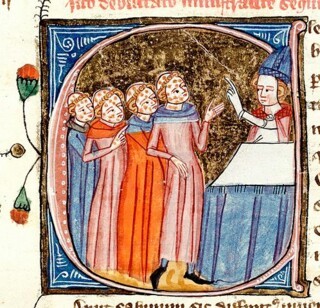In the Plague Pit
Hugh Pennington
The discovery of the Crossrail 13 – the skeletons found buried 2.4 metres under the road round Charterhouse Square – came as no surprise. John Stow’s 1598 Survey of London said that on account of the pestilence ‘the churchyards were not sufficient... The Bishop of London, in the year 1348, bought a piece of ground, called “No mans land”... for the burial of the dead.’ It was close to Charterhouse. Plague had arrived in England from France that summer, and came to London in the autumn.
If the bones are those of Black Death victims it is very likely that genetic material from Yersinia pestis, the bacterium that causes plague, will be found in their teeth. Such findings have already been reported, but usually in museum material from plague pits, collected before precautions were taken to prevent contamination with foreign DNA. Because soil from the Crossrail excavation can be tested, a positive result just from the bones will put a plague diagnosis beyond reasonable doubt.
Positive DNA sequences would have much more than archaeological importance. There is a pressing need for a better understanding of the evolution of Yersinia pestis; why it comes, and why it goes. The sequences will give answers. Why did a bacterium that had been around for hundreds of years suddenly change to cause the Black Death? Although that pandemic, its second (the first started in the 540s, during the reign of Justinian), eventually ran out of steam, another started in Yunnan in 1855. Why? It continues at a low key in many countries in Africa, Asia and the Americas. Will it take off again?
The UK has had only had two outbreaks in the last 200 years. A handful of cases occurred in East Suffolk in villages close to the Rivers Orwell and Stour between 1910 and 1918. Some rats were infected, and two rabbits, seven ferrets and a cat were killed. The 1900 outbreak in Glasgow was big enough to cause the port to be declared ‘Plague Infected’ under the rules of the 1897 Venice Convention. There were 16 deaths, all on the south side of the Clyde. Rats were said to have been seen running along telegraph wires into the city. But there was no spread. This has been the pattern worldwide for a century. Port outbreaks usually fizzle out because the local rodent/flea ecology is unfavourable.
But in the UK we are lucky not to have animals like ground squirrels, wood rats and chipmunks. When plague came to San Francisco’s Chinatown in 1900 it moved from urban rats to these rural rodents. Since then it has spread, slowly, to New Mexico, Arizona, Colorado, Oregon and Nevada. It may still be travelling east and north. Don’t cuddle a sick prairie dog. There was an outbreak among them in South Dakota in 2008.
